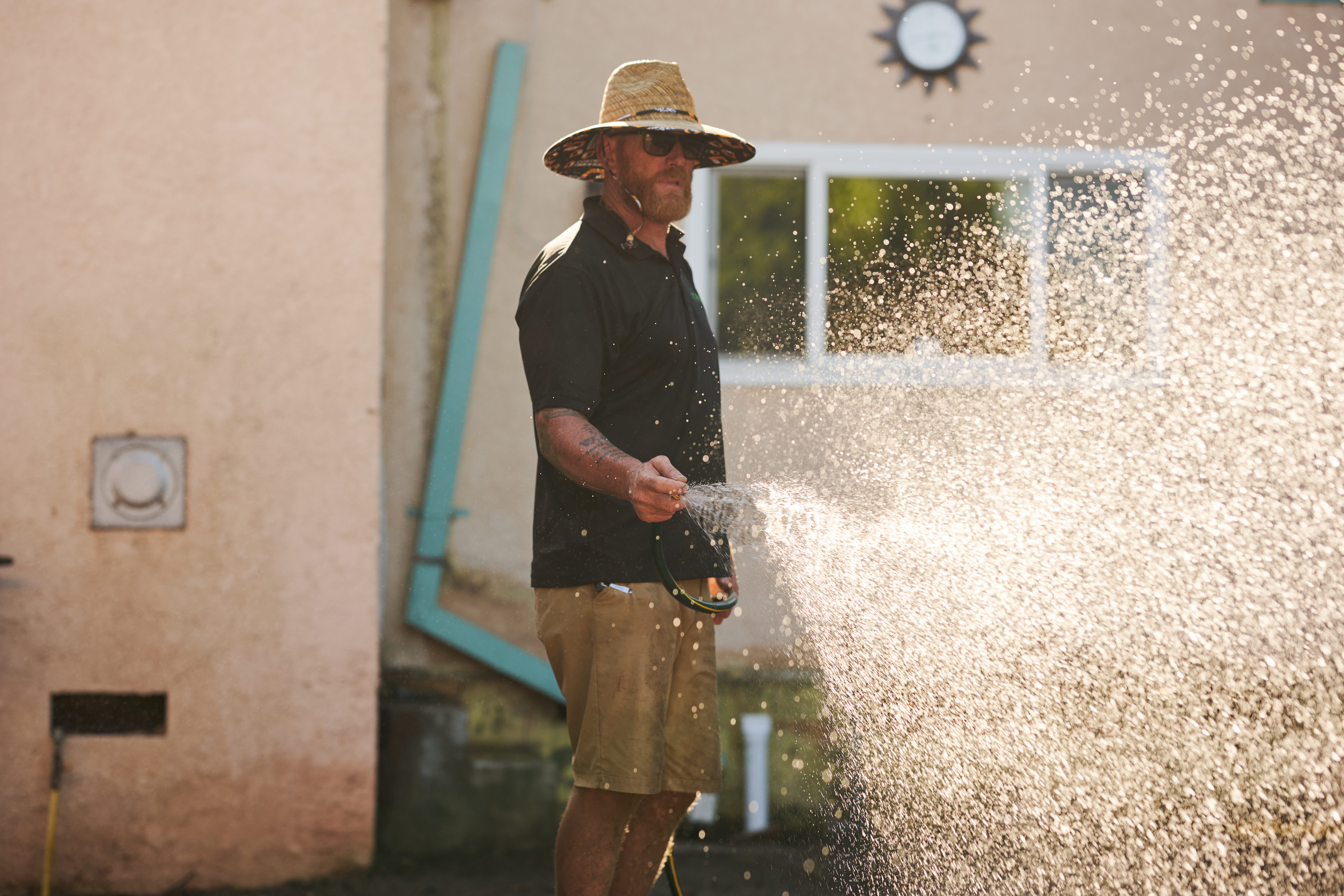
Leveling your yard can help with drainage and prevent damage to your home. Learn the cost to level a yard in Columbus, OH, and what factors can affect the price.
Bank on these 24 trees, shrubs, and flowers for a stable garden


Your property has a steep hill that’s begging for plantings. Or maybe your front yard slopes, making it hard to maintain, and you’re not sure which trees, shrubs, and flowers will thrive there. When landscaping a slope or bank, look for perennial plants with strong, deep roots to stabilize the soil and guard against erosion. Read on for a crop of suggestions, including ornamental grasses, groundcover roses, and shrubs.
These spreading plants help to reduce runoff. Have your local landscaper plant a mix of types, which will camouflage flaws, like weeds or dead areas.
“Look for fast-growing varieties, which will quickly fill your hill and give it a finished look. Just be sure to use barrier edging to contain potentially invasive species, like liriope, periwinkle vine, and ajuga,” says Tara Dudley, Owner of Plant Life Designs. “Plants native to your area will also help tremendously with stabilizing slopes as they are known for their deep roots.”
Also, stay away from mowing turf on steep, narrow slopes since you won’t be able to irrigate it properly—instead, the water will run downhill.
Ajuga: With bronze or green leaves and purple flowers in the spring, this variety prefers part sun.
Groundcover roses: For gentle slopes with full sun, choose spreading or groundcover varieties. You’ll reap color all season—without needing to prune or spray. However, we don’t recommend them for deer-heavy areas.
Catmint: For areas with full sun, this hardy perennial features purple flowers for months and attracts butterflies.
Creeping juniper: Plant this low-growing variety in areas with full sun, and you’ll see greenish to blue-green color year-round. As a bonus, you don’t need to prune once this plant is established.
Russian sage: With blue-green foliage and purple flowers, this drought-tolerant plant flourishes in full sun and attracts hummingbirds.
Fountain grass: Ideal for beds with full sun, this plant grows in dense clumps and sports flowers in the summer.
Interrupted fern: These plants thrive in shady areas with wet soil and help to minimize erosion.
Periwinkle vine (vinca): This evergreen perennial features purple flowers in the spring and spreads quickly. Plant in full sun in northern climates and dappled shade in warmer climates.
Liriope (lilyturf): Plant this dense perennial in areas with part to full shade. Grass-like in appearance, it features purple flowers in the spring.
Maiden grass: Plant dwarf varieties of this clumping deer-resistant plant on hillsides. It will thrive in areas with part to full sun.
Wildflowers: Go with a mix of types that bloom at different periods. Choose a top-quality seed mix and mow or cut stems down after plants go to seed.
Sedge: These grass-like perennials come in many colors and are drought-tolerant. Be sure to note sun and shade requirements when selecting sedges.
Trees provide shade and dimension to hillsides. Look for varieties with strong, deep roots rather than tap roots, or roots that grow vertically downward. Since tap roots don’t hold soil, the ground beneath them can slide, and the trees can die.
Japanese maple: This smaller version of the classic maple tree thrives on slopes and provides purple, orange, red, green, or gold leaves. These trees generally grow eight to 25 feet in height and prefer to be in protected locations.
Blue point juniper: This small pyramid-shaped conifer with bluish needles grows up to 12 feet tall.
Kilmarnock willow: This umbrella-shaped deciduous tree sports yellow buds in the early spring.
Red maple: This 30-foot-tall tree features gray-green leaves that become bright red in the fall.
Spring snow crabapple: This flowering tree grows up to 25 feet and doesn’t bear fruit.
Gravitate toward varieties native to your hardiness zone, as they’ll likely do best in your area’s climate.
Hydrangea: Offering lots of volume and colorful blooms, these plants have strong branches and thrive on inclined beds.
Boxwood: Plant this dense, hardy variety in beds with drained soil. It’s also an excellent deer deterrent.
Cotoneaster: This horizontal spreading plant has strong roots and features white flowers earlier in the season and red berries later in the season. Choose an area with full sun.
Forsythia: In the spring, these shrubs grow bright yellow flowers before their foliage comes in. Look for newer varieties that don’t require pruning.
Deutzia: Low-growing, this sun-loving plant features pink flowers in the spring.
Siberian cypress: This hardy, low-growing evergreen also makes for an ideal groundcover. Its bright green foliage turns brownish purple in cold weather.
From average costs to expert advice, get all the answers you need to get your job done.

Leveling your yard can help with drainage and prevent damage to your home. Learn the cost to level a yard in Columbus, OH, and what factors can affect the price.

From your flower beds to your walkway, river rocks make a classic addition to your landscape. Learn about the cost to install river rock to set a proper budget.

The cost to remove a boulder depends on the size, location, and equipment needed. Learn the average boulder removal cost and how to save money on removal.

There are reasons to grade or slope your yard beyond aesthetics—drainage is the main one. Read on and learn how to have an informed discussion with your pro.

The right landscaper can transform your property. Learn how to hire a landscaper who will be the best fit for your landscaping project.

Whether you’re updating your yard or moving into a new home, these tips will help you make sure your landscaping tactics around your house prevent water.